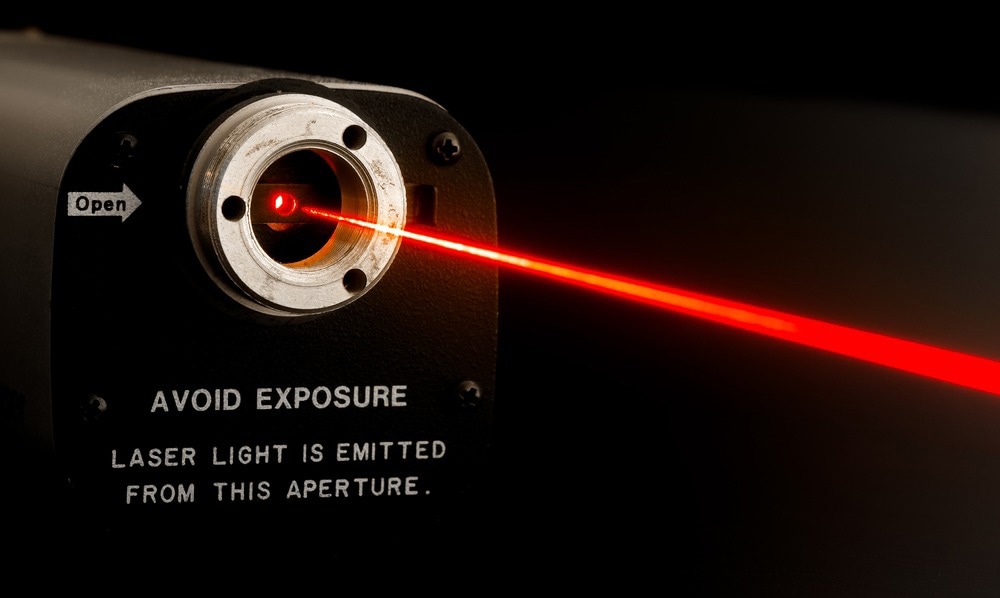A recent study published in Applied Sciences proposes a U-cavity system to boost the performance of cavity-enhanced spectroscopy systems. The asymmetric ripple effect significantly impacts the performance of the spectral system. This effect is distinct from the etalon effect. The folding mirror and the end mirror measurements of the spectral curve variations show the principal manifestation of this unusual phenomenon in the U-cavity system.

Study: Asymmetric Etalon Effect in Fold-Type Optical Feedback Cavity-Enhanced Absorption Spectroscopy. Image Credit: Doug McLean/Shutterstock.com
The researchers examined the features of the transmission spectrum in the presence of the etalon effect based on the multi-beam interference theory. The strength of each mirror's etalon effect is inversely proportional to its transmission loss value, meaning that the larger the loss, the smaller the ripple of the transmission spectrum in the U-cavity system.
Potential Advantages of Cavity-Enhanced Absorption Spectroscopy
Trace gas analysis is frequently used in environmental detection, medical diagnosis, atmospheric research, and industrial agricultural process management. Laser spectroscopy provides high-precision concentration detection of trace gas among several coexisting species with quick reaction, high resolution, and wide range.
The most widely used laser spectroscopy methods rely on infrared absorption technologies. Infrared absorption technologies include non-dispersive infrared absorption, cavity ring-down spectroscopy, and cavity-enhanced absorption spectroscopy.
The cavity-enhanced absorption spectroscopy technique is crucial to laser spectroscopy. This method was put forward in 1998 to aid cavity ring-down spectroscopy. The high-quality passive calming action of the optical cavity helps cavity-enhanced absorption spectroscopy to improve the effective absorption path. The effective absorption path of the absorbing media multiplies thousands of times when the laser encounters resonance conditions. Cavity-enhanced absorption spectroscopy does not require expensive light modulators such as optical switches. Instead, it measures the transmitted light intensity of the resonant cavity to determine the absorption spectrum. The cavity-enhanced absorption spectroscopy system is lightweight, affordable and appropriate for commercial use.
Method to Improve the Sensitivity of Cavity-Enhanced Absorption Spectroscopy
Frequency stabilization technology is the most efficient way to increase the sensitivity of cavity-enhanced absorption spectroscopy since it directly influences the minimum observable absorption coefficient. Pound-Drever-Hall technology and optical feedback frequency locking are the main methods for laser frequency stabilization.
Cavity-enhanced absorption spectroscopy achieves the multiplication of effective absorption routes (100–10,000 times) depending on the relaxation effect of the ultra-low loss optical cavity. It is possible to significantly increase the detection sensitivity and limit trace gas concentration. The optical cavity's high finesse laser injection rate can be efficiently increased with optical feedback cavity-enhanced absorption spectroscopy.
A fraction of the resonance light in optical feedback cavity-enhanced absorption spectroscopy reflects the laser beam. The linewidth of a semiconductor laser is significantly reduced when the optical feedback field has been matched in phase and feedback rate. As a result, the cavities' transmitted light intensity and sensitivity increase significantly compared to traditional cavity-enhanced absorption spectroscopy.
Development of Improved Cavity-Enhanced Spectroscopy with U-Cavity System
Wang et al. developed a high-finesse passive U-shaped cavity system with an optical feedback cavity-enhanced absorption spectroscopy setup. A unique asymmetric etalon is seen in the U-cavity system. The researchers examined and discussed the transmission spectrum of each mirror to shed light on the physical process underlying this phenomenon.
The accuracy of the U-cavity system increased when interference with spectral line measurement was removed, and the optical feedback cavity-enhanced absorption spectroscopy system with the lowest detectable coefficient was developed.
Research Findings
In this study, the researchers developed a fibered optical feedback cavity-enhanced absorption spectroscopy system based on a U-shaped cavity with improved spectral resolution. An asymmetric ripple effect was observed in the system, which significantly impacted spectral measurements. A theoretical and experimental analysis was offered for this unusual phenomenon. The findings indicated that the various losses of each cavity mirror are responsible for this phenomenon (the larger the loss of the reflector, the smaller the ripple amplitude).
The optical feedback cavity-enhanced absorption spectroscopy system was optimized to provide the system with the lowest detectable coefficient (αmin = 8.33*109 cm-1). The end mirror was optically glued with a prism to reduce this spectrum fluctuation efficiently. The suggested system evaluated the spectrum loss of highly reflecting mirrors by detecting the intensity of transmitted light from various mirrors after eliminating the ripple effect. The end mirror thickness was adjusted, and the augmented spectral signal of the end mirror cavity's ripple period was used to calibrate the laser wavelength.
These works can guide the performance enhancement of the cavity-enhanced absorption spectroscopy system. Numerous potential applications can be suggested in light of the asymmetric ripple effect in U-cavity-enhanced spectroscopic systems. The U-cavity-enhanced spectroscopy system offers a more straightforward design and a wider variety of applications than the conventional cavity-enhanced absorption spectroscopy system.
Reference
Wang, Y., Guan, S., Cao, H., & Tan, Z. (2022) Asymmetric Etalon Effect in Fold-Type Optical Feedback Cavity-Enhanced Absorption Spectroscopy. Applied Sciences, 12(19), Article 19. https://www.mdpi.com/2076-3417/12/19/10031
Disclaimer: The views expressed here are those of the author expressed in their private capacity and do not necessarily represent the views of AZoM.com Limited T/A AZoNetwork the owner and operator of this website. This disclaimer forms part of the Terms and conditions of use of this website.